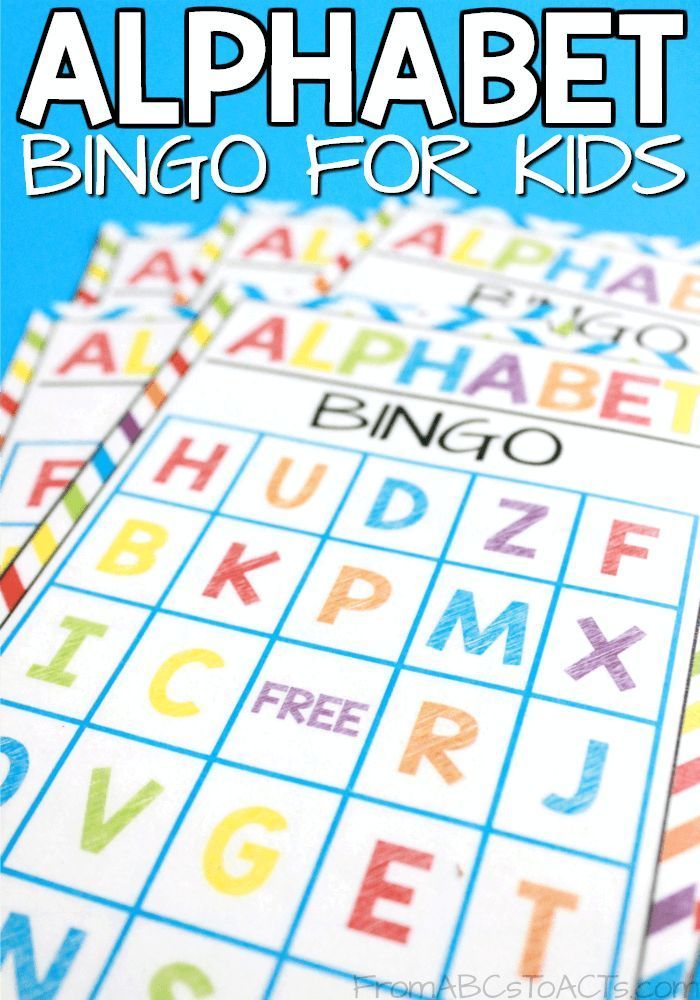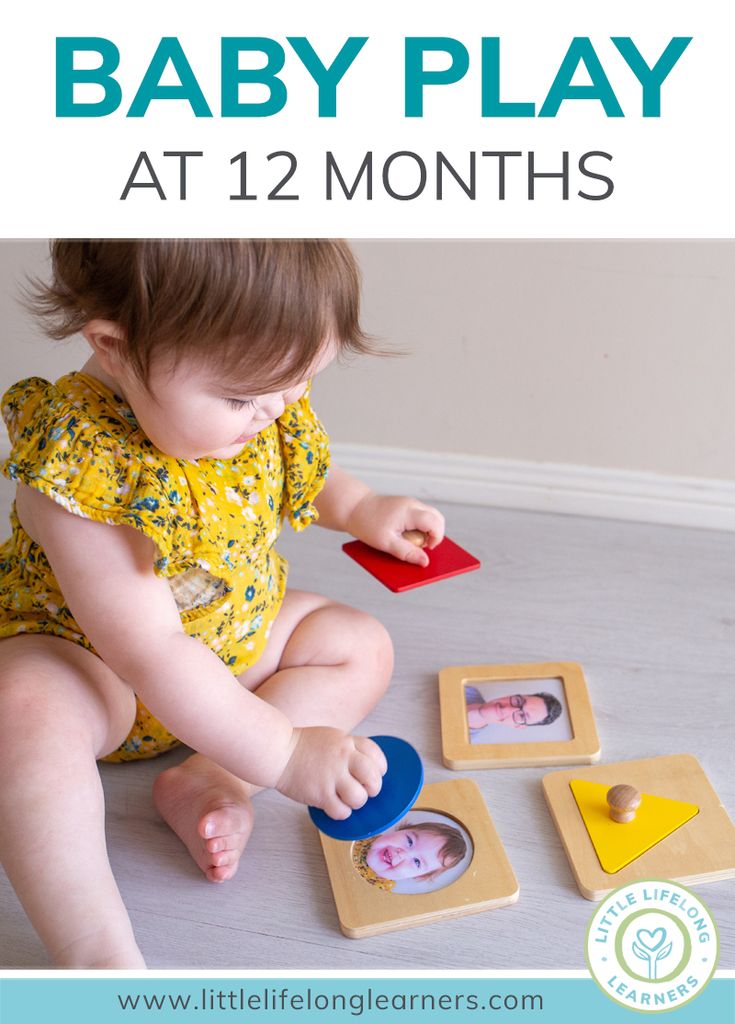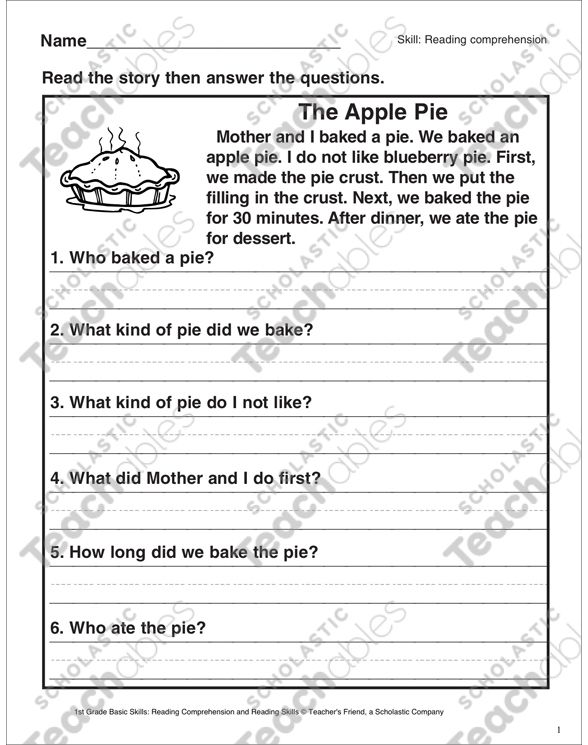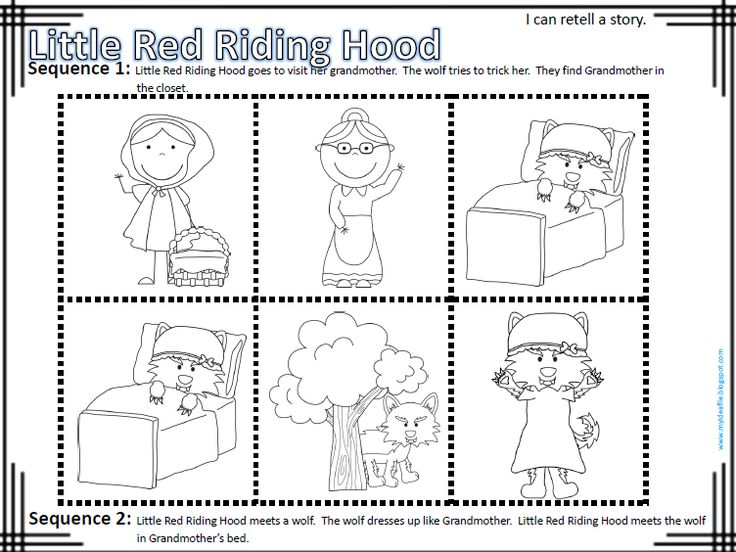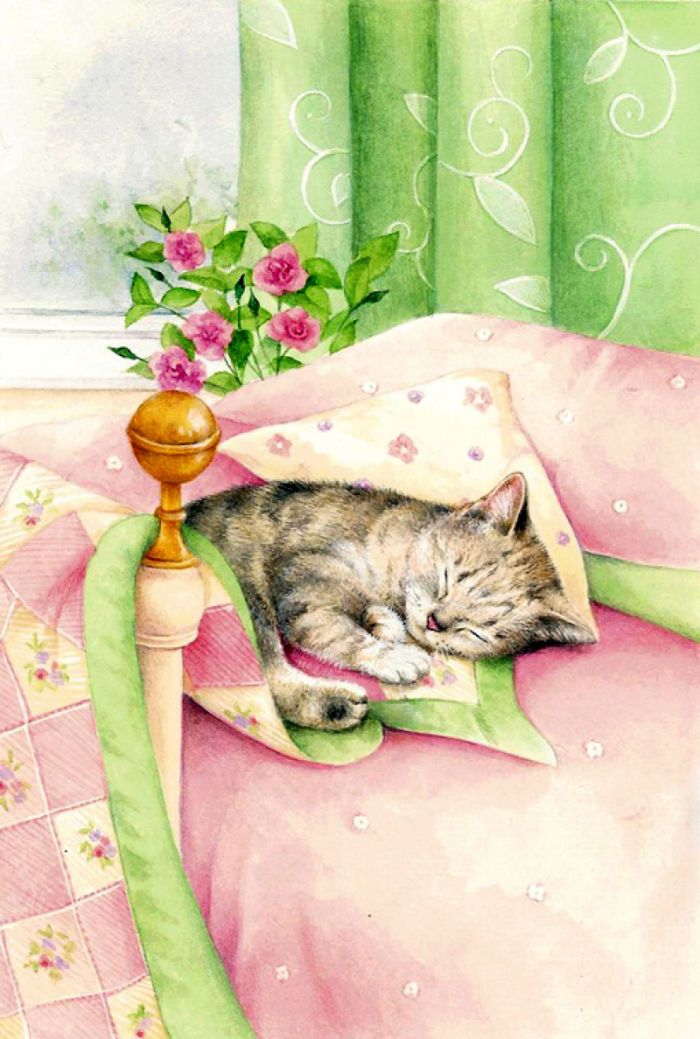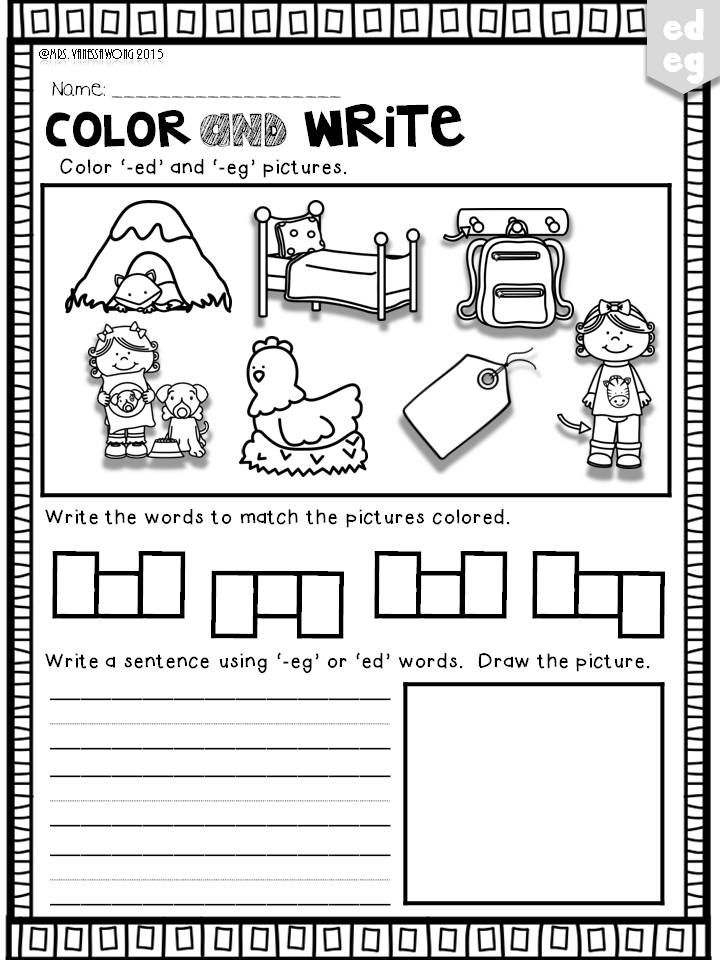Fun ways to learn the alphabet
26 Easy, Fun Alphabet Activities That Give Kids the Practice They Need
Alphabet activities make learning your ABCs more fun. There are so many ways to practice your ABCs, you might be able to do one alphabet activity a day for a year without repeating. We’ve gathered over 25 super fun alphabet activities so kids can play and learn every day.
1. Write letters on dried beans
Large dried white beans are inexpensive to purchase and easy to write on. Grab a sharpie and write all the upper and lower case letters on them. Then put each set in a pile (or baggie) and ask your kids to match them.
ADVERTISEMENT
2. Letter sort with sticky notes
Write individual letters on sticky notes and then place them all over your house or just on every stair in a staircase. This practice game has a lot of variations—all tied to sorting. Ask kids to sort by:
- lowercase
- uppercase
- letters in their name
- straight lines (H)
- curved lines (c)
- both curved and straight lines (B)
- consonants
- vowels
For even more practice: have them sort their finds into ABC order, match lowercase letters to uppercase letters, and then, find a way to sort them that’s new.
3. Write letters in shaving cream
Squirt shaving cream on a table and let your kids write letters in the cream. Smoothe it out to erase and start again. Bonus: their hands and your table will be cleaner than ever!
Source: Rose and Rex
4. Bend letters with pipe cleaners
Pipe cleaners have always been a trusted source of good fine motor practice as well as a fun craft resource. Now use them to have kids create uppercase and lower case letters.
Learn more: make and takes
5. Make sensory ABC bags
This one is great because you can change up what you put in here and even move to sight words. You’ll need a gallon bag with a ziplock top. Add letters written on pieces of paper, magnetic letters, scrabble tiles, or anything else you can think of with letters. Then fill the bag with rice or oatmeal and seal it. Kids dig through the rice through the bag to find the letters. When they find them, they write down the letter they find until they locate all 26 letters of the alphabet.
For more sensory ideas: Little Bins Little Hands
6. Find invisible letters with watercolors
This is a classic. Using a white crayon, draw letters on a piece of white paper. Give your kids watercolor, let them paint the paper, and watch the letters appear.
Learn more: Gift of Curiosity
7. Play musical alphabet
Set up letters in a big circle on the floor. You can use magnetic letters or just write them on index cards. Put music on and have your child walk around the circle to the music. When the music goes off, your child tells you the closest letter. Expand on it: ask your child to name three things (colors, animals, etc) that start with that letter.
8. Sponge the alphabet
Cut sponges into letters and use them for sponge painting letters or playing in the tub.
Learn more: Learning 4 Kids
9. Put together name puzzles
Write the upper and lower case letters in a name and then cut them apart in a simple zigzag.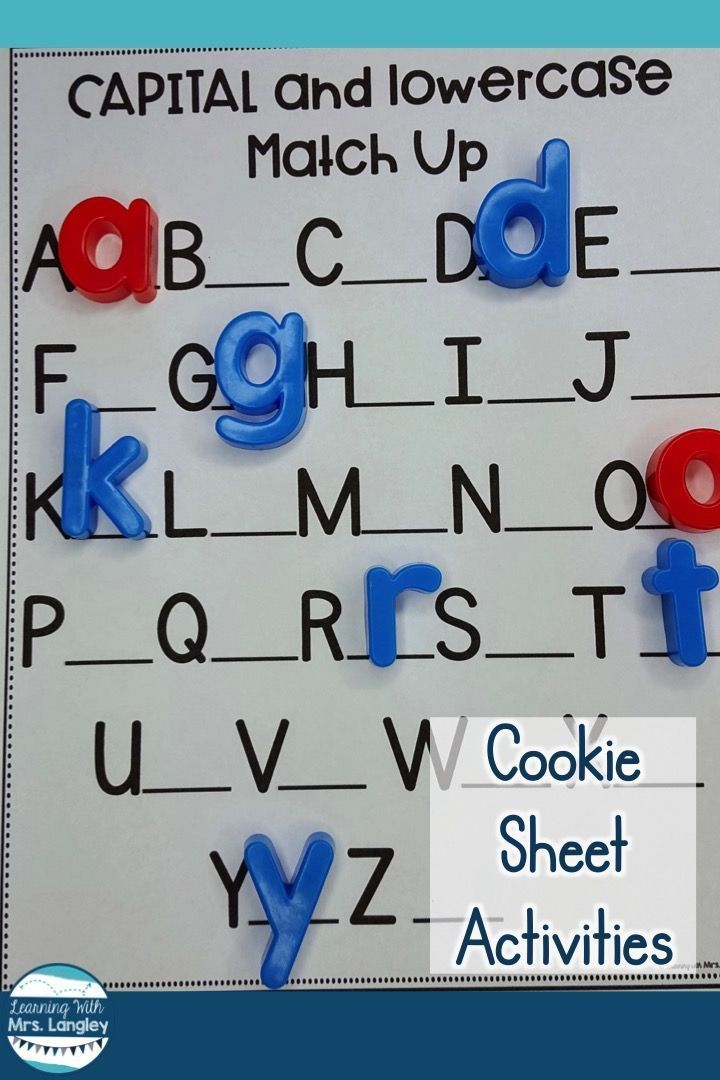 Mix up the letters and ask a child to match them up and put them in the right order.
Mix up the letters and ask a child to match them up and put them in the right order.
10. Make letters from nature
Find the alphabet right outside. Choose natural objects that already look like letters, or arrange them to look like them.
To learn more: Right Brained Mom
11. Eat your ABCs
We know from Alphabet Soup that eating your ABCs is plain old fun. So think of all the ways you can practice the alphabet at mealtime. Pancakes can be made into letters, jello can be cut into letters, and noodles can be used to make letters (just to name a few).
Learn more: Parent Map
12. Go on an alphabet scavenger hunt
The fun part about this for grown-ups is that there is no prep. Tell kids to go find objects that start with each letter of the alphabet. To make this game take longer, designate spots for them to bring each item back—one at a time. Every item must be approved before they can move on to the next. This allows for fewer meltdowns at the end when an item is deemed inaccurate.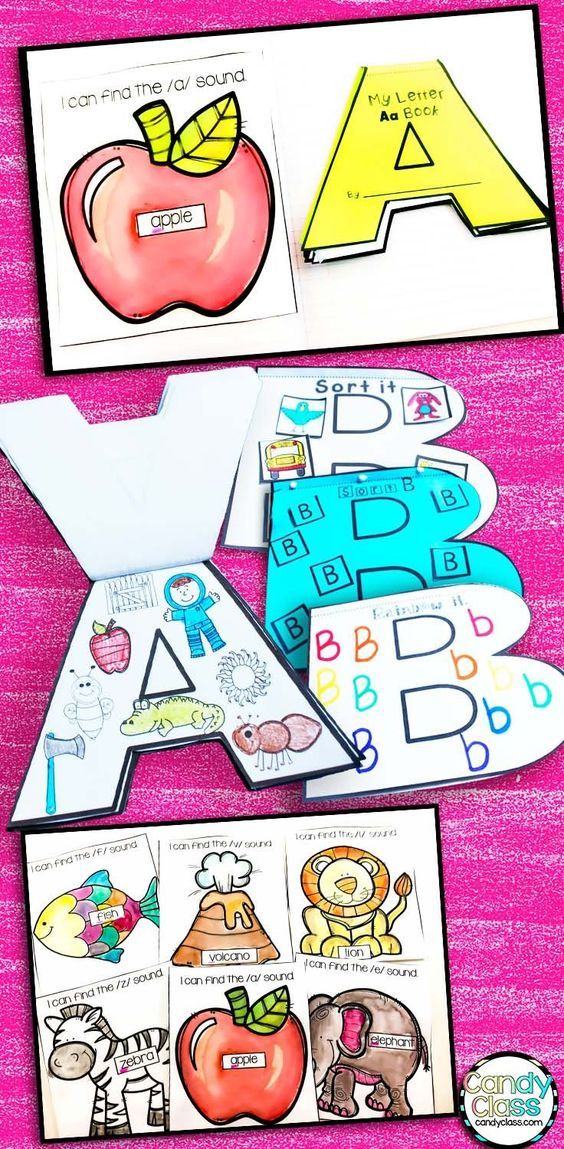
13. Make your own ABC book
Personalizing the ABCs helps kids process and retain their learning. One of our favorite alphabet activities starts by creating a book out of 26 pieces of paper and staples or hole punches and a ribbon. Have kids write an uppercase and lowercase letter on each page. Finally, have them draw or cut out pictures of things that start with each letter. Voila!
Learn more: Teach Mama
14. Create ABC popup books
Use the following tutorial video to learn how to make different kinds of pop up pages. Then, create a page per week for 26 weeks for each letter. At the end, use a glue stick to glue them all together to make an ABC popup book!
15. Stamp letters in playdough
Roll out playdough and push letter stamps right into the dough. This is both tactile and great for practicing ABCs.
Learn more: I can teach my child
16. Make tactile letter cards
There’s lots of research (and experience) to support the value of using all the senses to learn. Making these tactile alphabet cards will be fun and have lasting benefits.
Making these tactile alphabet cards will be fun and have lasting benefits.
Learn more: All About Learning
17. Trace letters in spices
This one combines touch, smell, and sight. It gives you an opportunity to talk about what we uses spices for as well. Put the bottle in front of a child and have them write the spice name in the spice to make things a bit more challenging.
Source: Frog in a Pocket
18. Study a letter of the week
Many PreK and Kindergarten classes do a letter of the week, and for good reason. Teachers all share that instant recognition of letters and practice writing them is so important for learning to read. Doing alphabet activities for one letter each week reinforces knowledge and recollection.
For weekly activities: Preschool Mom
19. Do the yoga alphabet
Show kids this video and take the time to learn each yoga pose. Connecting the mind and the body is great for learning.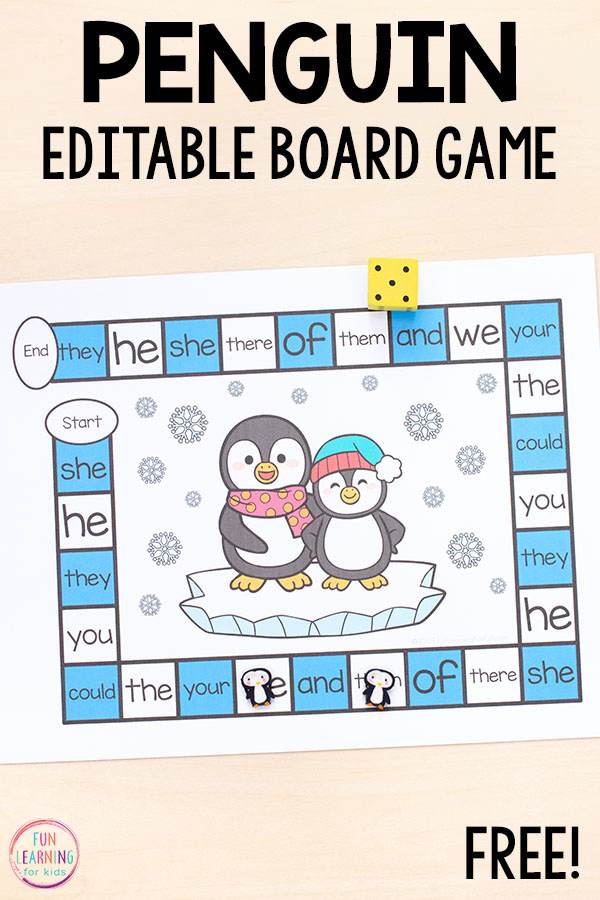
20. Sing songs about the alphabet
Everyone loves to sing the alphabet song, but did you know there are lots of other songs to sing that can help you remember the alphabet? Try out this Sesame Street favorite:
21. Draw pictures from letters
Using letters as a starting point, teach kids how to draw. If this is too difficult at first, just write a letter and then draw a picture around the letter.
Learn more: Felt Magnet
22. Highlight letters on a page
Print a page of text or grab your favorite magazine and a highlighter. Ask kids to highlight as many of one letter as they can find. This is also great for sight word recognition.
Here’s a freebie from The Inspired Apple to get you started.
23. Do-A-Dot letter tracing
These dot markers make tracing letters more fun and help kids with directionality and remembering how to write and recognize letters.
Free Dot tracing sheets: DTLK’s Educational Activities for Kids
24.
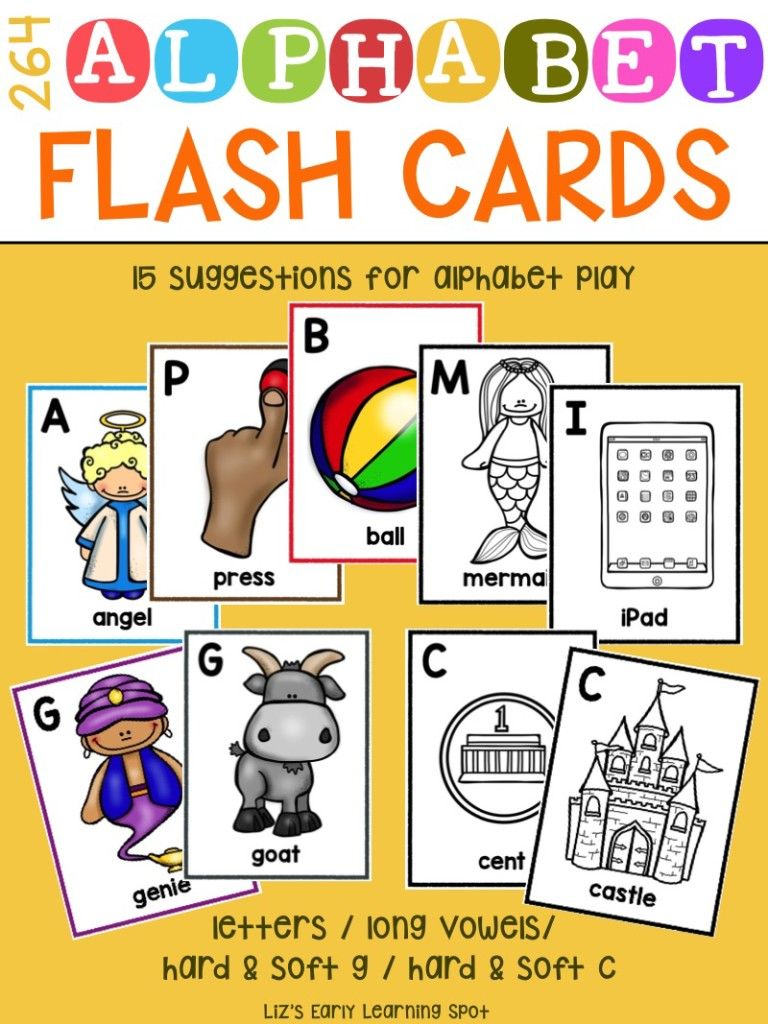 Play letter slap
Play letter slapMake 2 sets of index cards with all the letters on them (52 cards in all). Shuffle the cards together and deal them so each kid holds 26 cards. Together each player takes their top card and turns it upright. The player with the letter closest to A wins the hand and takes the card. If two of the same letter are played, the players slap the card. The one on the bottom of the slip wins the hand. The game ends when one player holds all the cards.
25. Match plastic Easter egg letters
Surely you have some plastic Easter eggs hanging around your attic. Use a Sharpie or letter stickers to put an uppercase letter on one half and a lowercase letter on the other. Then separate the two and throw them all in a basket. Kids pull them out and match them up. Tip: Add difficulty by not coordinating the colors.
Learn more: Crystal and Co.
26. Create loose part letters
What are loose parts? Loose parts are exactly what they sound like—a collection of loose materials or objects. These can be small pebbles, bottle caps, random LEGO bricks, seeds, keys, anything. Draw big letters on a piece of paper and have kids line up loose parts to make the letter.
These can be small pebbles, bottle caps, random LEGO bricks, seeds, keys, anything. Draw big letters on a piece of paper and have kids line up loose parts to make the letter.
Recognizing letters is a fundamental part of learning how to read. Without it, children struggle to learn letter sounds and identify words. Beginning readers who know their alphabet have a much easier time learning to read. Making alphabet practice a part of every day in fun ways helps create a lifelong love for letters and words.
What games and activities do you like to use for practicing the alphabet?
Plus, our favorite activities using alphabet beads and the best alphabet books.
Top 10 Ways to Remember the ABCs
All this week some of the members of the Kid Blogger Network are sharing resources to keep kids learning while school is out. We’re chiming in with tons of fun ways to teach the alphabet. Whether your child has been busy learning the ABCs all year or you’re just looking for some fun ways to expose your child to the alphabet, this collection of ABC activities should give you tons of ideas for helping kids remember the ABCs.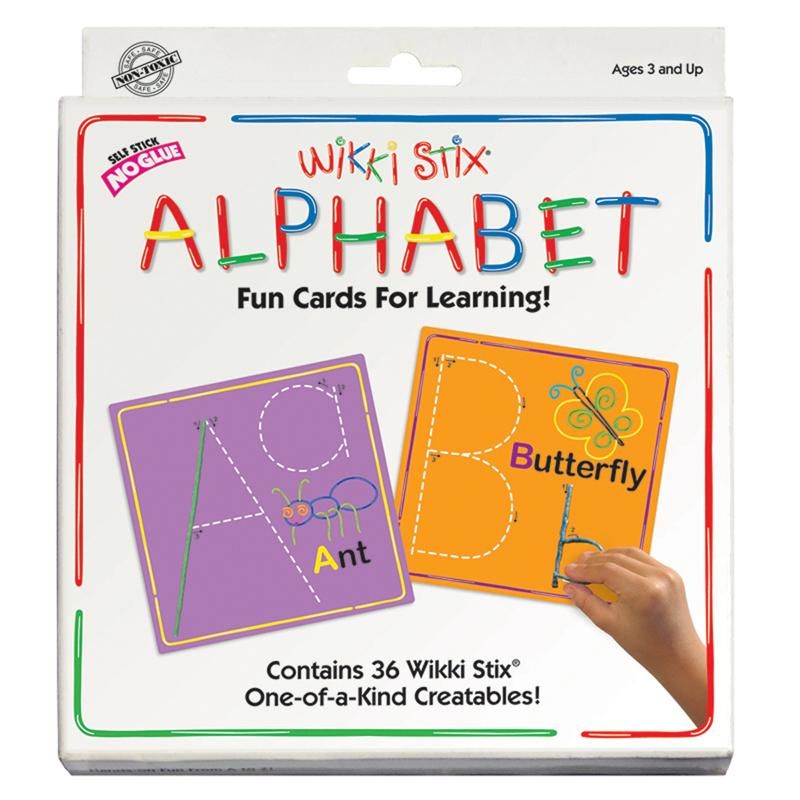 Many of the fun ways to teach the ABCs include a summer twist, but they could be used any time of the year. In this massive collection you’ll find both alphabet activities for toddlers and great abc activities for preschool.
Many of the fun ways to teach the ABCs include a summer twist, but they could be used any time of the year. In this massive collection you’ll find both alphabet activities for toddlers and great abc activities for preschool.
**This list is updated with new activities regularly.**
Top 10 Ways to Help Kids Remember the ABCs
Go on an Alphabet Hunt to Learn Your ABCs- Anytime, Anywhere ABC Hunt-Hide Alphabet Post-It Notes or flashcards and let kids find them all. We love doing this at home and in hotel rooms on vacation.
- ABC Water Balloon Hunt – Label water balloons with the letters of the alphabet. See if kids can find them all without breaking them.
- Car Ride Letter Hunt – Find the letters of the alphabet on road signs and license plates. Use a checklist or go in ABC order for more of a challenge.
- Grocery Store Letter Hunt – Find the letters of the alphabet on foods and signs in the grocery store.
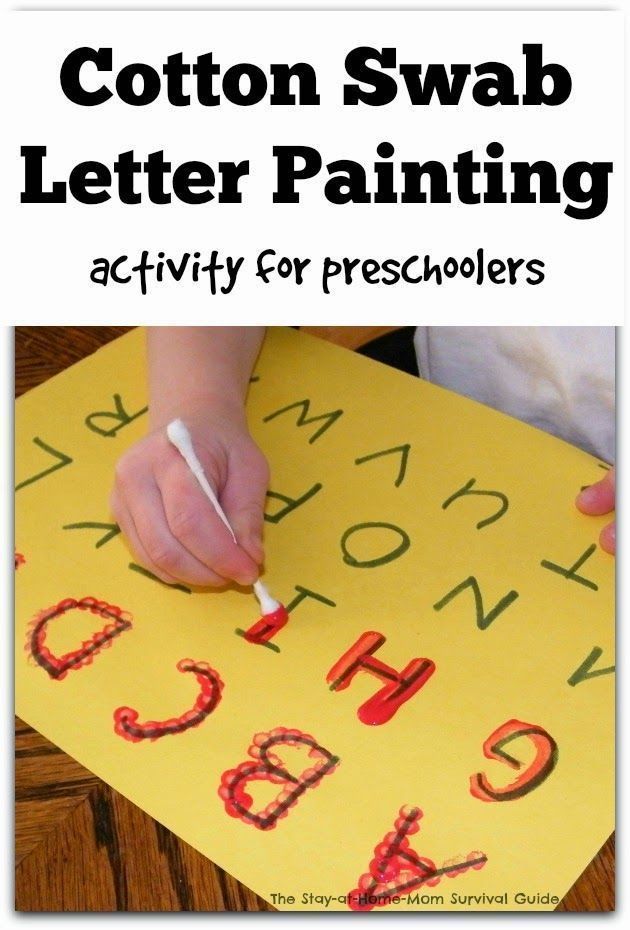 Use a checklist or go in ABC order for more of a challenge.
Use a checklist or go in ABC order for more of a challenge.
Get your kids up and moving with this fun Bug Spray Summer Alphabet Game
Use ice to learn the alphabet using this fun Ice Letter Hunt
Create your own outdoor alphabet scavenger hunt with this DIY ABC Paper Plate Checklist and Neighborhood Walk
Go for a letter scavenger hunt with this Alphabet Letters in Objects activity.
Learn the alphabet in this fun Glow in the Dark Letter Hunt activity.
Use photos to create this fun Alphabet Photo Scavenger Hunt.
Get outside and moving with this Garden ABC Letter Hunt!
Dive into the pantry (or the kitchen pretend play center at school) and search for the alphabet in this printable Pantry ABC Scavenger Hunt.
Or use this full set of I Spy ABC Games — There are tons of options to try and ways to use them!
For even more ways to get kids moving while learning the alphabet visit our gross motor alphabet activities collection.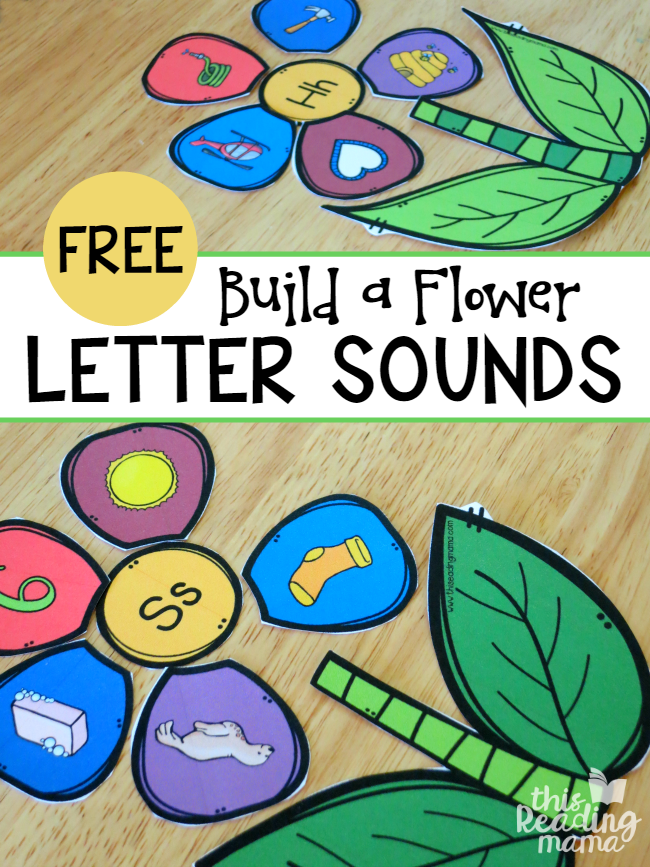
This fun Alphabet Bug Spray activity will teach your kids all about bugs and the alphabet!
Get your kids outside to do some of these simple Sidewalk Chalk Letter Activities.
If your kids love sticky wall activities, they will love this Alphabet Sticky Wall.
Get your kids up and moving with this fun Outdoor Alphabet Track.
If your kids love firefighters, they will love this fun hands-on ABC Fireman Spray activity.
Learning letters can be fun with this Amazing Alphabet Maze.
This simple Race Track ABC Game will give your kids hours of fun educational play time!
Window Write and Wipe – Use window markers to write letters on the window. Call out a letter and have kids wipe it away with a damp cloth.
Learning ABCs in the Tub or Kiddie Pool- Put Them Up, Take Them Down-Toddlers especially love to put letters on the wall one-by-one.
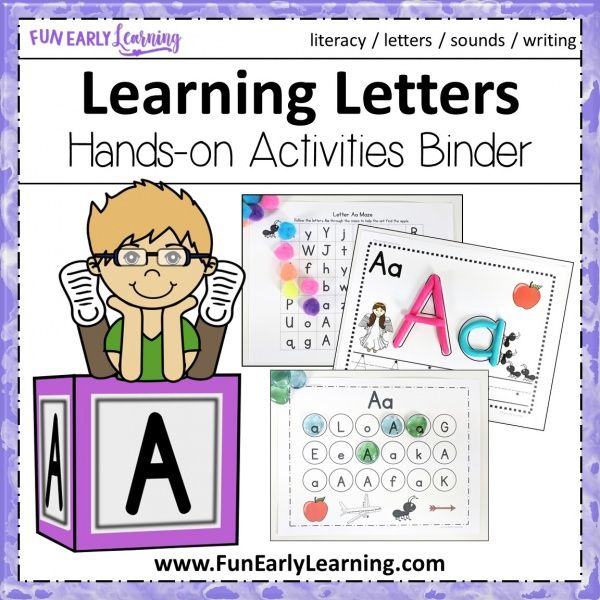 Use this time to name the letters as kids play.
Use this time to name the letters as kids play. - Puppet Play-Use a bath mitt, old glove, or sock puppet to swim through the water and eat up the letters. (My kids LOVE this!)
- Fish for Letters (Growing a Jeweled Rose)
- Magnetic Alphabet Bath (Bath Activities for Kids)
- Alphabet Goo Bath (Bath Activities for Kids)
- Alphabet Soup Bath (Bath Activities for Kids)
- DIY Bath Tub Drawing Board (Parent Teach Play)
- Fishing for the Alphabet Matching Game (The Imagination Tree)
See More ABC Water Play Ideas Here
Learn the ABCs Through Your Sensory Play ActivitiesThis printable Ocean Theme ABC Sensory Bin is the perfect alphabet activity to play during the summer!
Kids are never too young to learn the alphabet when there is this fun Alphabet Sensory Play activity for them!
This simple ABC Rice Bin is part literacy and sensory fun!
These Icy Fizzing Letters make working with alphabet letters so much fun!
Create a beautiful and natural resource for learning the alphabet with these Alphabet Shells.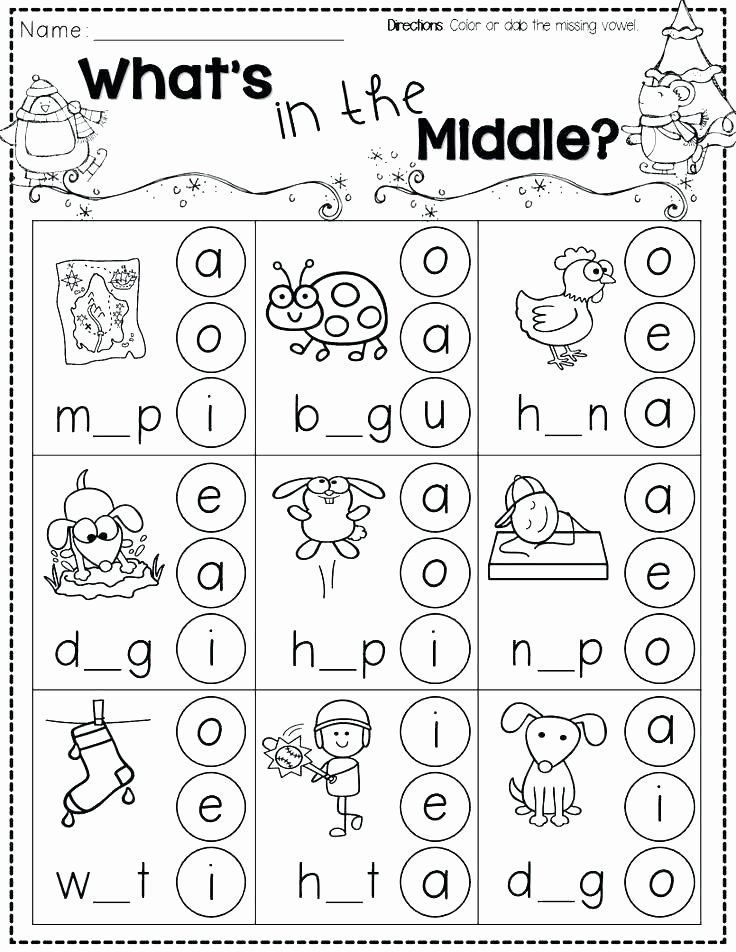
Make frozen letters into a fun way to learn the alphabet with this Alphabet Ice Block Play.
This Alphabet Sorting with Natural Materials is such a fun way for your little ones to learn the alphabet.
Your little ones are going to love this fun ABC Ping Pong Ball Sensory Tub activity.
This fun Hide-and-Seek Alphabet Play is a great way for your kids to learn the alphabet.
If you are looking for a great beginner sensory bin for your toddlers, this Alphabet Soup First Sensory Bin is a great option.
This Eye Spy Alphabet Squish Bag is so simple to make and a great activity for your kids to play with.
If your kids love water beads, they will love this fun and creative Alphabet Goo.
There are so many skills your child can learn and expand on with this Play Dough and Magnetic Letters activity.
Have some Smashin’ Ice Fun and break letters out of ice blocks!
This Alphabet Squish is the perfect alphabet and tactile activity for little ones.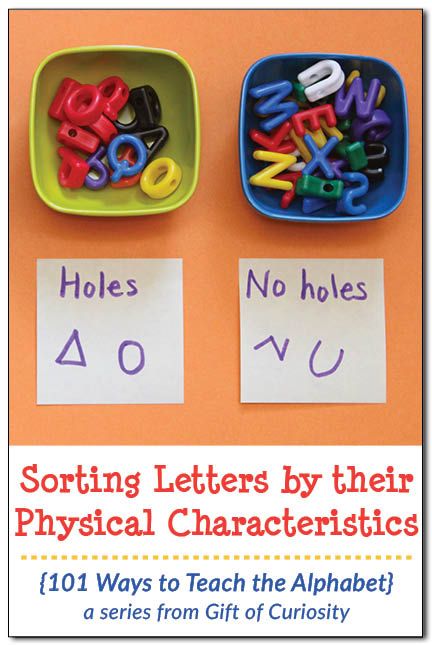
This multi-sensory Alphabet Cups on the Light Box experience is a fun and unique way to teach kids the alphabet.
Use these Flower ABC Mats for Play Dough and Loose Parts to teach your kids the alphabet in a fun and flowery way!
Practice letter formation by using these Watermelon ABC Mats.
See More ABC Sensory Play Ideas Here
Play with the ABCs in the Sand (Box, Bin, or Beach)- Write the letters. Let kids use their hands, twigs, small toy trucks, anything that will make an imprint.
- Hide letter manipulatives and gold coins in sand, and go on an Alphabet Treasure Hunt.
- Make and dig for Alphabet Fossils
- Bury and find some Alphabet Rocks (Thrive 360 Living)
- Read Eating the Alphabet
- Eat Through the ABCs-Each day for 26 days eat one (or more) food that starts with a letter of the alphabet. On “A Day,” eat apples. On “B Day,” eat bananas.
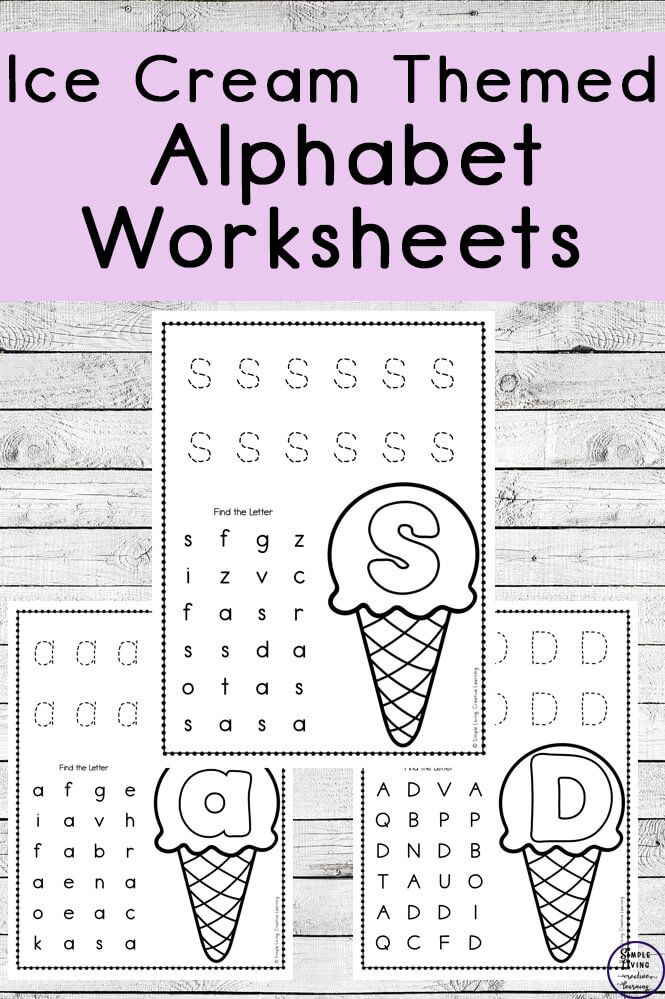
- Bake alphabet bread (Nurture Store)
- Use ABC cookie cutters to make your own alphabet foods. They are great for watermelon, cheese, thin breads, and well…cookies! Preschoolers will enjoy helping make snack and learning letters at the same time.
- Use foods to make letters. Try using carrots, celery sticks, small crackers, halved grapes, or pretzel sticks.
- Find some ABC food inspiration in this list of A to Z Party Food Alphabet Ideas (Learn with Play at Home)
You can find alphabet books for almost any topic that might interest your child. Have fun exploring some new ones together. Here are a few lists to give you some fresh ideas.
- 50 Fantastic Alphabet Books for Kids (No Time for Flashcards)
The list below includes some summer-inspired ABC books that would be great to read while school is out.
- Discovering Nature’s Alphabet
- Summer Stinks
- Into The A, B, Sea: An Ocean Alphabet Book
- The Ocean Alphabet Book
- A Swim Through the Sea
- S Is for S’mores: A Camping Alphabet
- H Is for Hook: A Fishing Alphabet
- The Butterfly Alphabet Book
- Alpha Bugs: A Pop-up Alphabet
- The Icky Bug Counting Book
We also have a list of our favorite fall ABC Books.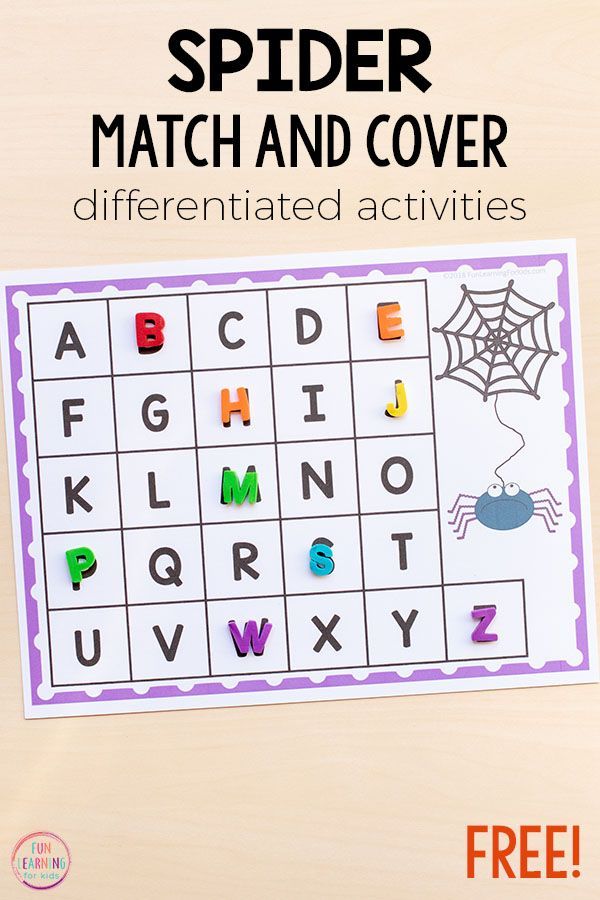
ABC Books are great to make with young kids. Help set up a book that your child can make and read over and over again. Some topics you might consider…
- ABC Yarn Book (Small Types)
- Personalized ABC Book (This Fine Day)
- ABCs of Summer
- ABCs of Our Family Vacation
- ABCs of Your Child’s Favorite Things
- ABCs of a special interest-dance, bugs, sea life-anything that your child is interested in.
Use this Floor Tape Letters idea from I Can Teach My Child for kids just beginning to form letters. Encourage others to construct the letters without a guide.
- Pipe cleaners (Make and Takes)
- Wiki Stix or Bendaroos
- Craft Sticks
- Q-tips
- Spaghetti noodles (try both dry and wet)
- Marshmallows and toothpicks
- Small toys (blocks, toy cars, Legos, dominoes)
- Items collected from nature (Rubber Boots and Elf Shoes)
These 12 Games to Play with ABC Sticky Notes are a fun way for your kids to learn the alphabet.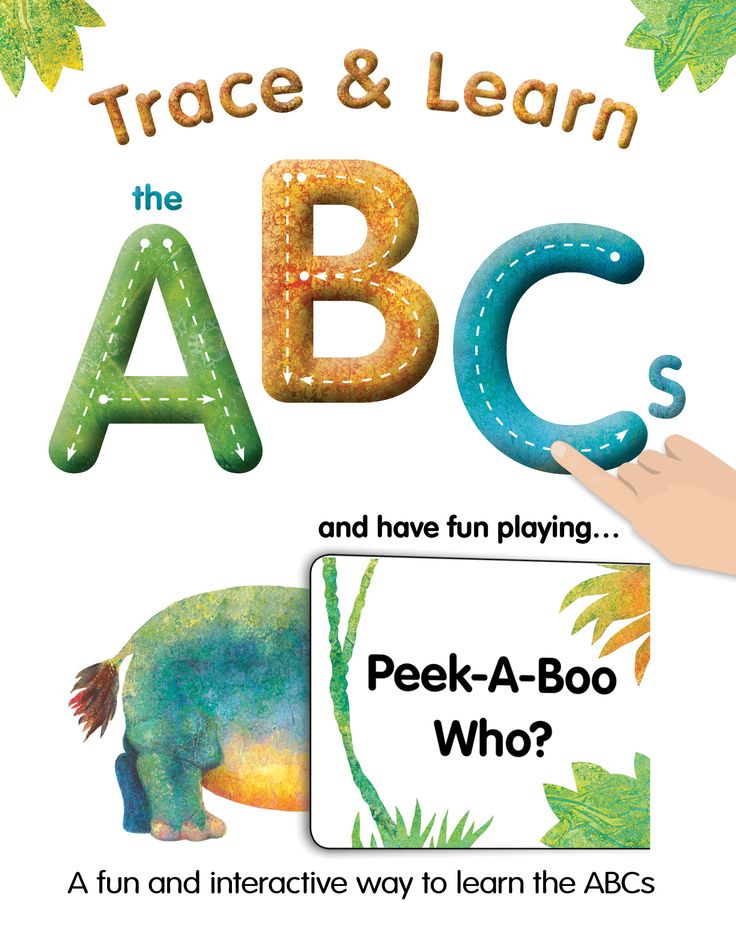
This ABC Slam! Game is toddler approved and perfect for your little ones.
This fun letter Alphabet Sound Machine game is perfect for early literacy.
Your kids will love pretending to be a mailman with this fun Alphabet Mail Pretend Play.
Help your kids learn the alphabet with this Hungry Bear Alphabet Game.
If your kids love playing with cars, they will love this fun Alphabet Parking Lot Letter Matching Game.
Your kids will have fun learning letters using this fun Alphabet Car Game
Practice letter recognition and learn letter sounds using this Roll and Say Summer ABC Game
Use colorful gems to match up uppercase and lowercase letters using this Alphabet Gems Letter Match
If your kids loved Don’t Spill the Beans, they will enjoy this fun Don’t Spill the Letters Game with an educational twist
If you are on a long car ride with kids, keep them learning with this fun Cardboard Tube and ABC Stickers Letter Matching
Your kids will love delivering letters using this fun Letter Delivery Game
This Magnetic Letter Sorting Ideas is a fun way to practice letter recognition in a fun and hands-on way.
From story retelling to alphabet and phonemic awareness, this Jack and the Beanstalk ABC Game has it all!
This fun Alphabet Balloon Touch combines gross motor development and letter recognition all in one fun game!
Your kids will have a ball playing this ABC Beach Ball game
Let your kids play with water balloons and learn the alphabet using this fun Water Balloon Target Practice
Teaching letter sounds doesn’t have to be boring with this Musical Alphabet Game
Make your own fun puppet theatre with this ABC Puppet Show
Add some learning to your child’s favorite train set with this Train Set Letter Play
Your kids will have fun learning letters and get some pretend play in too this summer with this ABC Ice Cream Gross Motor Game
If your kids loved the book School Bus, they will love this fun School Bus ABC Game
Make charades educational with this fun Alphabet Letter Charades game
This simple yet fun Alphabet Letter Monster game for preschoolers will be a hit with your little ones
This fun Runaway Letter game will help kids identify letters in a fun and creative way.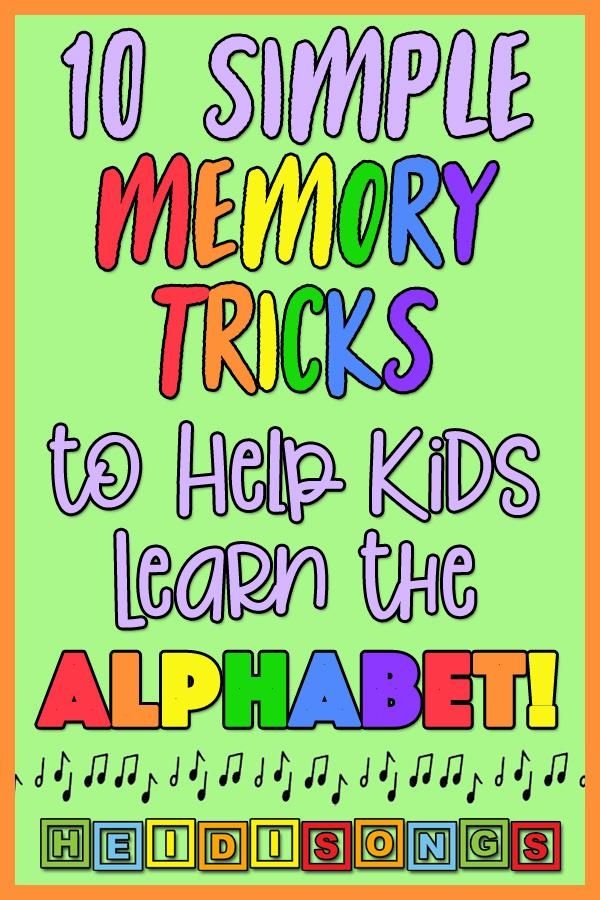
This Hot Cocoa Roll and Say Winter ABC Game is so quick to set up and a fun way to learn letter recognition.
You don’t need to prepare anything to play this fun flower themed No Prep Roll and Say Spring ABC Game.
Practice matching letters with this cool Watermelon ABC Matching Game.
In the winter use this Mitten ABC Matching Game to practice letter recognition.
The list below includes some great ABC games if you are looking to add some to your game collection.
This fun Eric Carle ABC Game is based on popular books from Eric Carle’s collection!
Practice key reading skills using this Super Why ABC Letter Preschool Game
Get your kids up and moving while they learn with this Dr. Seuss Super Stretchy ABCs
If your kids love the classic story Goodnight Moon, they will love this Goodnight Moon My World ABC Game
This fast paced Spot It! Alphabet game is perfect for anyone looking to practice letter recognition.
Practice letter names, sounds, and more using this cool Grandma’s Trunk Alphabet Game
This Melissa & Doug Undersea Alphabet Soup Game makes learning letter recognition and spelling way more fun!
Encourage learning and creativity using this Alphabet Squiggle Game
This fun Learning Resources Pop for Letters Game is perfect for learning sounds or letter recognition.
This Capital and Lowercase Letter Matching Game will teach early reading skills to your kids in a fun and interactive way!
If your kids love Go Fish, they will love this learning twist on a classic game with Alphabet Go Fish Letter Matching Card Game
Practice letter recognition while hunting for treasure with Alphabet Island Letter & Sounds Game
This Alphabet Slap Jack learning game will teach your kids about upper and lowercase letters and so much more!
And don’t forget about alphabet apps. There are some terrific ones for kids! See our full review of Avokiddo ABC Ride to learn more about this interactive app with 26 engaging scenes.
With so many terrific ideas out there for learning letters, there is no way I could include them all here. You can find even more great ideas in these collections from other members of the Kid Blogger Network.
50 Incredible Alphabet Activities for Preschoolers (Hands On As We Grow)
The A-Z of Learning Letters (Learn with Play at Home)
25 Alphabet Activities for Kids (No Time for Flashcards)
ABC letter mats can be a versatile tool to use in early childhood learning.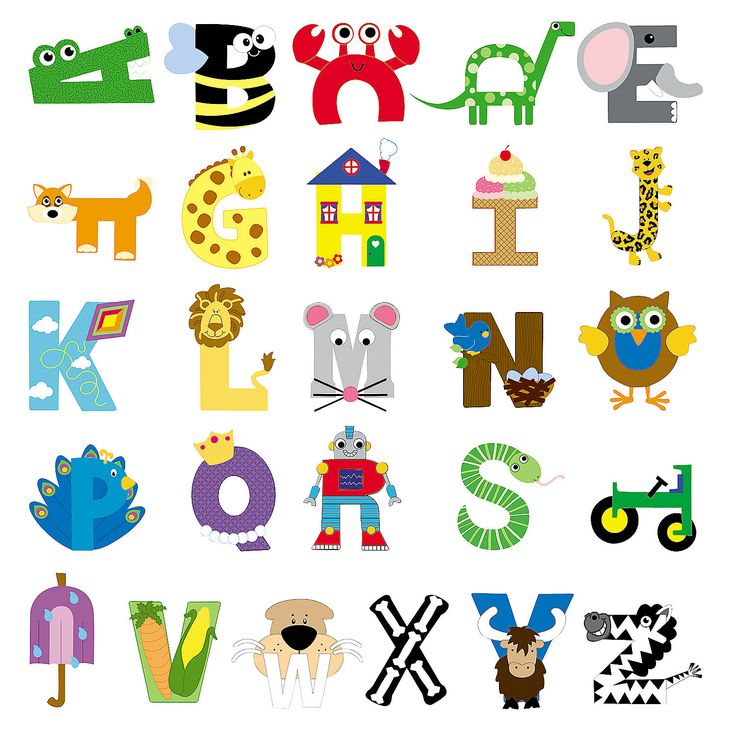 They can be laminated and used over and over again for letter formation and writing activities. They can also be used to create alphabet books, posters and more. Letter crafts and process art activities related to a letter you are learning can be a fun way for kids to make connections between a letter and something that starts with that beginning sound. In our Alphabet Letter Mats set you’ll find two full sets of alphabet mats to use and tons of ideas for using them. There are over 140 ideas for using the alphabet mats in meaningful ways to reinforce letter recognition and learning letter sounds.
They can be laminated and used over and over again for letter formation and writing activities. They can also be used to create alphabet books, posters and more. Letter crafts and process art activities related to a letter you are learning can be a fun way for kids to make connections between a letter and something that starts with that beginning sound. In our Alphabet Letter Mats set you’ll find two full sets of alphabet mats to use and tons of ideas for using them. There are over 140 ideas for using the alphabet mats in meaningful ways to reinforce letter recognition and learning letter sounds.
This 181-page resource pack contains the following:
1) Suggestions for Using the Letter Mats-These ideas include ways to use the mats for small group and center activities and can be done for any letter of the alphabet.
2) Process Art Ideas for Each Letter of the Alphabet-60 ideas!
3) Collage and Texture Art Ideas for Each Letter of the Alphabet-54 ideas!
4) Complete sets of alphabet mats in two different font options.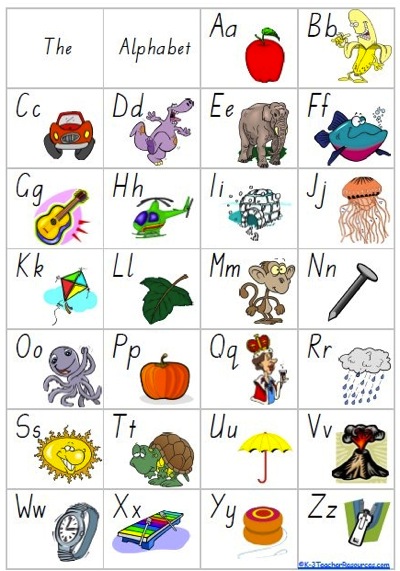
I know this post was long, but I hope you find it useful. Thanks for reading along! Happy letter learning!
More Alphabet Activities
Try these excellent resources for more hands-on alphabet activities.
More About the School’s Out! Series
Visit This Reading Mama to learn more about School’s Out: A Top 10 Series and check out all the resources shared by over 20 mama bloggers from the KBN.
5 Ways to Learn the Alphabet Quickly and Easily with a 3-6 Year Old Child – Somersault
Before learning the alphabet with a child, it is important to understand what you are not going to do. Namely, learning to read. This is a more complex skill, so it is worth putting it off until the time when the child gets acquainted with all the letters and will confidently recognize them and write on their own. Until then, put off the alphabet and reading by syllables.
In this article, we have put together the basic principles to quickly learn the Russian alphabet with a 3-6 year old child in a playful way. For all games with letters, you can use plasticine, paints and any improvised means or magnetic letters - they will easily attract the attention of the child.
For all games with letters, you can use plasticine, paints and any improvised means or magnetic letters - they will easily attract the attention of the child.
Contents:
- Learn the Alphabet Easily: Basic Principles
- 5 ways to learn the alphabet with your child
- From alphabet to reading
How to Learn the Alphabet Easily: Basic Principles
Each child can find an easy way to learn the alphabet that suits him or her, but there are basic principles that are important for all children. If you do not follow them, study will turn into drill and the child is unlikely to ever love to read. Here are a few such principles on how to properly learn the alphabet for a child.
- Learn sounds first, not letters . At the first stage of learning, it does not matter how the letters in the alphabet are called correctly.
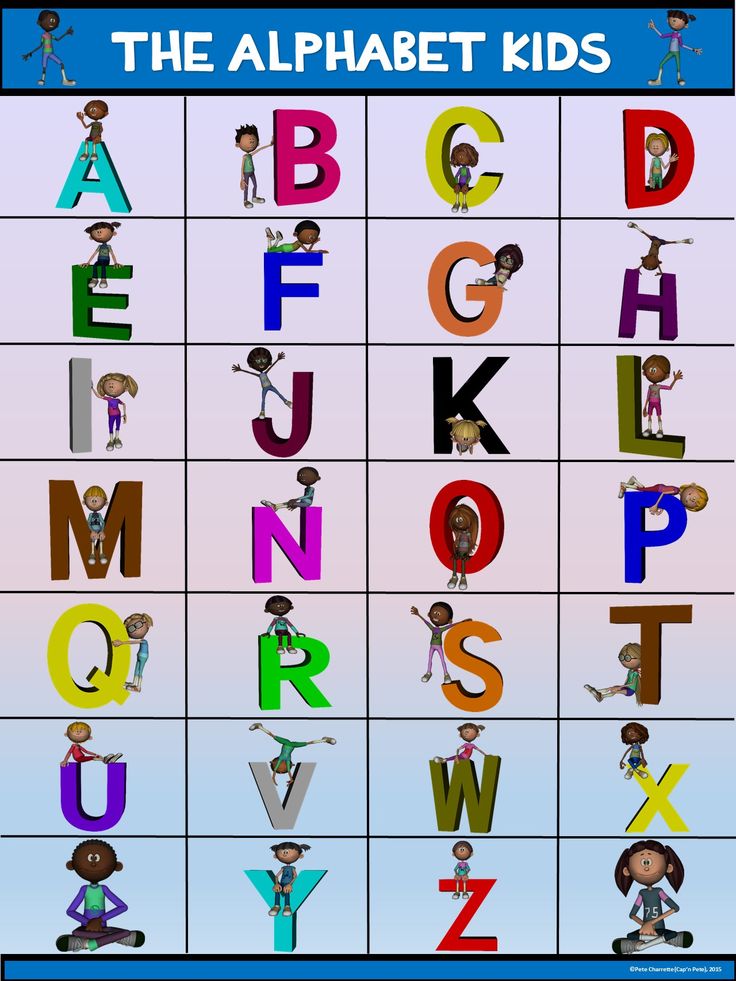 Now only sounds are important for the child - "d", and not the letter "De". The names of the letters will only confuse the child, who first needs to learn to recognize the shape of the letters and their sound.
Now only sounds are important for the child - "d", and not the letter "De". The names of the letters will only confuse the child, who first needs to learn to recognize the shape of the letters and their sound. - Not learning the alphabet in the correct sequence . Until a child goes to school, it is of no use to him to know how the letters are arranged in the alphabet. This information will only distract him from what is really important: how the letters look and sound. The sequence of the alphabet can be learned later or even at school, where this knowledge will be tested by the teacher.
- Do not turn learning into a lesson . Learning from call to call is difficult even for children at school, let alone a baby. Therefore, all learning should take place in a playful way and not for long: 5-7 minutes a day to get acquainted with the letters will be enough. Gradually, this time can be increased, especially if the child likes the proposed games with letters.

- Use material objects . At the age of 3-6 years, the child learns the world by touch and taste. It is difficult for him to work with abstract letters spoken aloud. Therefore, it is better to stock up on plasticine and paints and create letters that are more understandable to the child and can be touched. Such a game for children will allow the child to learn the letters of the alphabet and he will recognize them in different forms regardless of what they are made of.
- First vowels, then consonants . Vowel sounds are easier to pronounce, so it's worth starting with them.
The main thing is not to force anyone. If you see that the child is inquisitive, enjoys exploring the world and is ready to learn, you can move on to learning letters and the alphabet. So the child will be happy to learn the alphabet in a playful way and gradually learn to read. So that the game is not abstract, you can use the magnetic letters TUMBLING.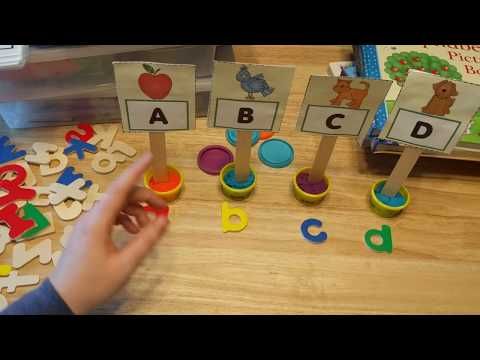
5 ways to learn the alphabet with your child
1. Use an interesting topic to study
Use your child's interest to spur his motivation to learn. For example, if your kid is crazy about cars, let them be the topic in which you learn the alphabet. Use any words related to cars:
"A" - bus
"B" - trunk
"C" - driver, etc.
You can show cars and their parts, draw or sculpt from plasticine. It is important that the child's focus shifts from learning to doing what they love. Additionally, the method will help expand vocabulary and knowledge about the world.
2. Cross out a letter of the alphabet in the list
Fill in a small square with arbitrary letters. The task is to cross out only the letter that you are studying. This will help the child focus on one letter and not get distracted by the ones he doesn't remember or don't know.
3. Pulling the letters of the alphabet out of the pouch
The soft-touch magnetic letters are perfect for this method.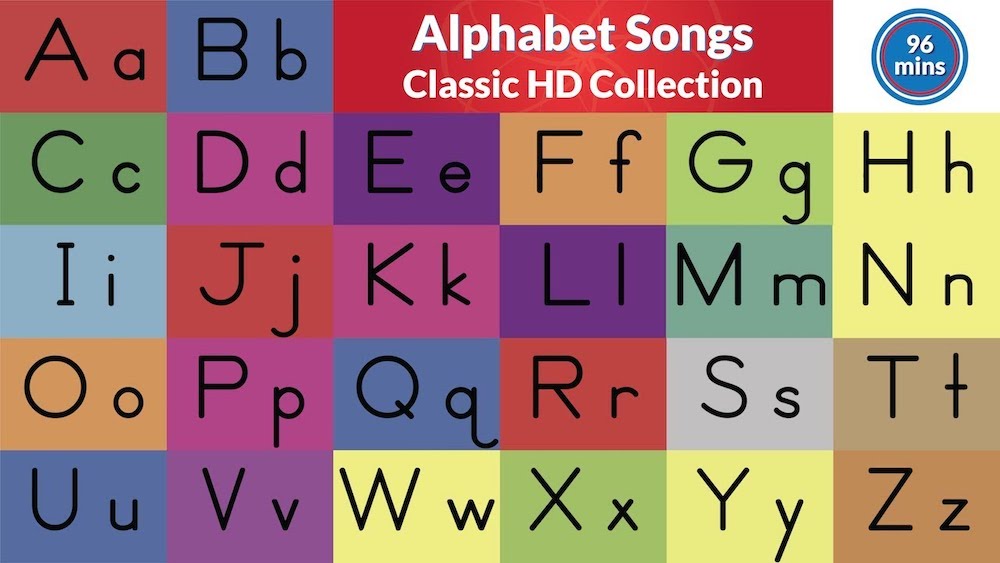 Put the letters in a bag and give the child the task, without looking, to pull out only the letter that you thought of. Let there not be too many letters in the bag, otherwise the child will get confused. 6-7 pieces will be enough. To start, use letters that are very different in shape, such as "O" and "M". Gradually, the complexity can be increased and searched among similar letters, for example, "K" and "X". Don't forget to praise and encourage your child. You can alternate the learning process with desktops.
Put the letters in a bag and give the child the task, without looking, to pull out only the letter that you thought of. Let there not be too many letters in the bag, otherwise the child will get confused. 6-7 pieces will be enough. To start, use letters that are very different in shape, such as "O" and "M". Gradually, the complexity can be increased and searched among similar letters, for example, "K" and "X". Don't forget to praise and encourage your child. You can alternate the learning process with desktops.
4. Recognize letters of the alphabet by ear
You pronounce a word, and if it contains a hidden letter, the child claps his hands.
With this game for kids, you can learn individual letters or the entire alphabet. For example, you name a word, and the child inserts its first letter into the insert frame. To stimulate your child's interest, you can use only words from his favorite topic, for example, the names of animals.
5. Guess words starting with the first letter
You choose one letter and think of a word that starts with that letter. For example, the letter "Z":
For example, the letter "Z":
- What is this animal with big ears and loves carrots?
- Hare!
This game form is again suitable for learning individual letters or the entire alphabet. If you learn only one letter, the child gets used to quickly recognizing it in different words. And if you give words with different letters, the child as a whole learns to understand with which letter they begin. With the study of the account and the English language will also help TUMBLING.
From the alphabet to reading
When a child learns the Russian alphabet, confidently recognizes all the letters in different words and can draw or mold them on his own, it is worth moving on to reading. Because you need to learn the alphabet just so that the child can read. If knowledge is not used, it will hang as an extra burden, and by the time school will be forgotten. Therefore, you should not learn the alphabet too early: at 3-4 years old, a child is simply not interested in reading books in order to learn something new. He is more interested when his mother reads. Conversely, by the age of six, the child will be glad to have his own books to read them himself.
He is more interested when his mother reads. Conversely, by the age of six, the child will be glad to have his own books to read them himself.
How to quickly learn the alphabet - learning letters with a child
Letters are all around us. The child sees them in books and magazines, on product packaging, in shop windows. He can't help wondering what it is. Over time, he begins to understand that adults can read, begins to copy his parents, having learned a poem or a fairy tale by heart, and pretending that he is reading a book.
Experts recommend teaching a child to read shortly before school, since at an earlier age his brain is not yet ready to perceive such information. You can learn sounds with it, learn to distinguish them in oral speech, start mastering the alphabet. This pre-letter period is very important, because thanks to it the child will be able to learn to read fluently and understand what he read.
At what age do you start learning letters?
Many parents are sure that a child's development should start almost from the cradle.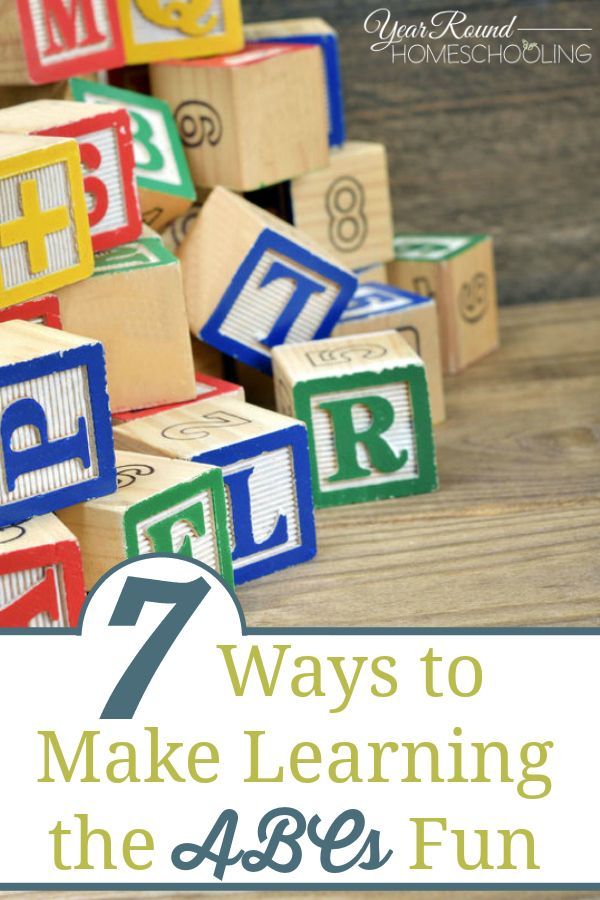 But neuropsychologists warn that learning letters and numbers before the age of 3 is harmful. At this age, the emotional and sensory sphere should be formed. If we force a child to learn, then we violate the laws of brain development, which can have negative consequences.
But neuropsychologists warn that learning letters and numbers before the age of 3 is harmful. At this age, the emotional and sensory sphere should be formed. If we force a child to learn, then we violate the laws of brain development, which can have negative consequences.
No specialist will tell you that at the age of 3 or 4 a child should know all the letters. Of course, if you wish, you can force him to learn the alphabet, but this will not be useful, but, on the contrary, can harm. The brain is ready for reading most often by the age of 5-6, and only in 20% of babies - by 4-5. Before this time, it is not worth studying letters.
But this does not mean that you can forget about the development of the child. At 3-4 years old, you need to work on the development of speech, teach the baby to ask and answer questions correctly, pronounce words, and study the world around him. You need to work on fine motor skills, teach him to dance, form a sense of rhythm, and so on.
These are the recommendations.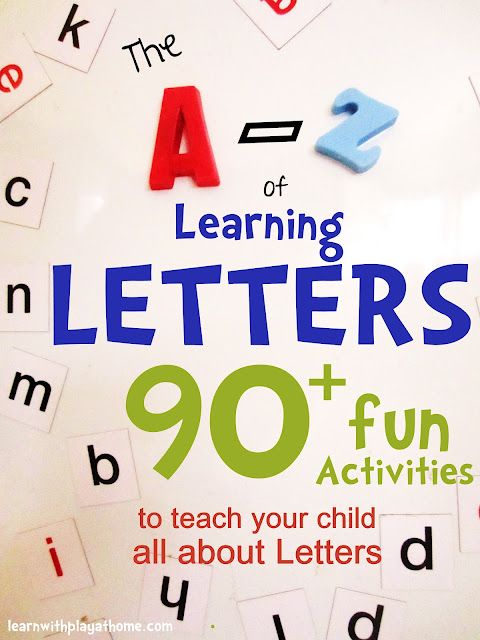 However, all children are different. If a child has shown a sudden interest in letters, it means it's time to start learning. And it does not matter if it manifested itself late, for example, at 6 years old. The child should want to read, only after that you can study with him.
However, all children are different. If a child has shown a sudden interest in letters, it means it's time to start learning. And it does not matter if it manifested itself late, for example, at 6 years old. The child should want to read, only after that you can study with him.
Psychologists note several signs that indicate a child's readiness for learning:
- The child perceives well what he has read by ear and can tell what the book is about.
- He knows how to build phrases, pronounce all sounds.
- Interested in what is written in a children's magazine, book or poster.
- Pretends to read, imitating adults.
If all these signs appear, you can start classes. You can’t put pressure on a child, force him to study, bribe him (“learn the letters - I’ll give you a chocolate bar”) - this will not achieve anything.
In those cases where the interest in letters appeared early, there is no need to give up classes. But do not overload the baby, work with him for no longer than 7 minutes, classes do not have to be done every day, you can take breaks of 2-3 days.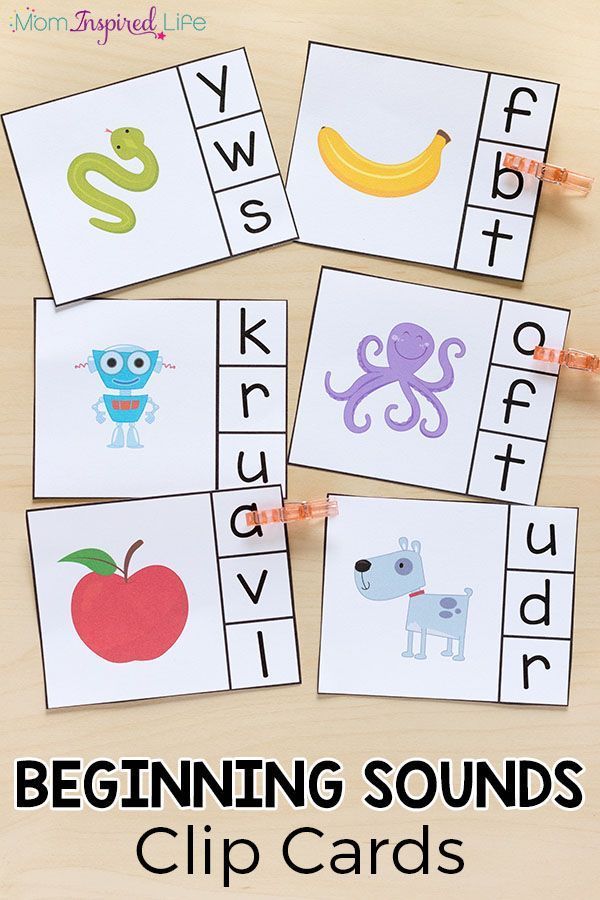
How to start learning the alphabet?
The child began to show interest in letters. No need to immediately load it with knowledge, cramming the alphabet. Move a little. The easiest way for children to remember the first letter of their name. Explain to him what this letter is, what it is called. You can ask him to find this letter in the text. Gradually, he will learn to highlight it, will pay attention to it. The first step has been taken.
Parents now trust their children's education to various children's tablets, phones and other similar toys. Remember that they are teaching letters, not sounds. Toddlers need to be taught precisely sounds, so it will be easier for them to master reading.
A letter is a graphic representation of sound, each has its own name. But learning to read, knowing only the names of the letters, is very difficult. Imagine that the child will need to read the word "ball". How will he do it? Just as he was taught: "beael".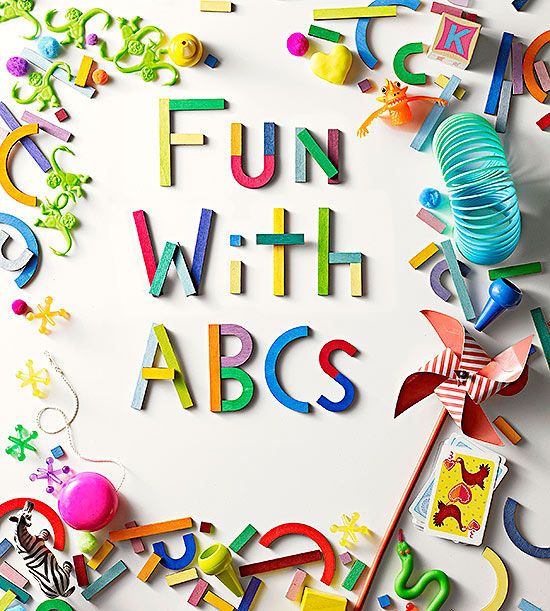 And all because he pronounces letters, not sounds.
And all because he pronounces letters, not sounds.
It is better to start learning with sounds, pronouncing them with the child. Parents themselves should not confuse sound and letter. Sound is what we hear. A bumblebee buzzes - this is a sound, a hammer knocks - this is also a sound. But far from all sounds we can get words. If we clap our hands, the sound will appear, but the word will not.
You can create a word from special sounds called speech sounds. Make sure that the child does not confuse the letter and sound. Explain to him that a letter is an icon that can be seen in a book or drawn on paper. Letters can be seen with the eyes and sounds can be heard.
General recommendations for teaching a child
If you decide to work with a child, remember the basic rule - he should be interested. You can't force him. At this age, the easiest and most accessible way of learning is through the game.
It is difficult for kids to concentrate, to sit in one place for a long time, so classes should be short, 5-10 minutes each.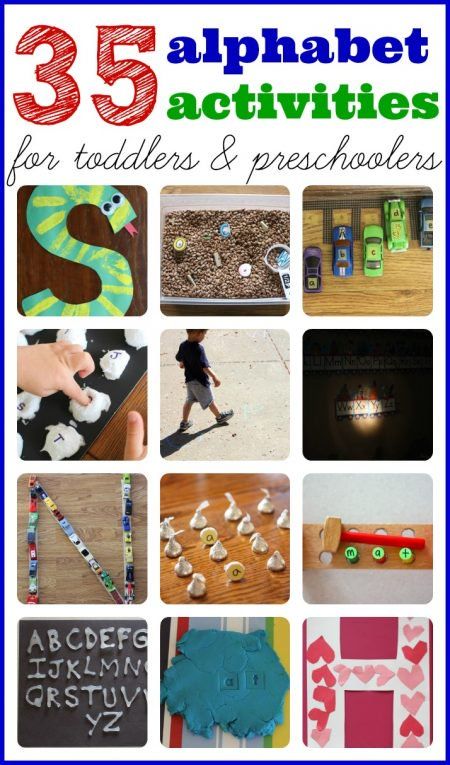 As soon as you notice that he has become bored, switch to something else. If he forgot everything that you went through, do not get annoyed, repeat again until he remembers. If you overload your child with information, he will develop an aversion to learning.
As soon as you notice that he has become bored, switch to something else. If he forgot everything that you went through, do not get annoyed, repeat again until he remembers. If you overload your child with information, he will develop an aversion to learning.
At an early age, a child develops visual-figurative thinking, and only then - abstract-logical. This means that it is useless to draw letters on paper or a board. So you can't learn them. For him, it will be just a set of dashes.
The child needs a visual association. For example, if you are learning the sound "a", you can show him a picture of a watermelon or any other item that starts with that letter. Stock up in advance with soft cubes with letters, bright cards, coloring books, beautiful colored primers.
Do not learn letters in alphabetical order. It is better to start learning with vowel sounds. The letters that are most often found in speech are studied first, then you can move on to rarer ones.
How to learn vowels?
First, explain to your child that all words are made of sounds, just as houses are made of bricks.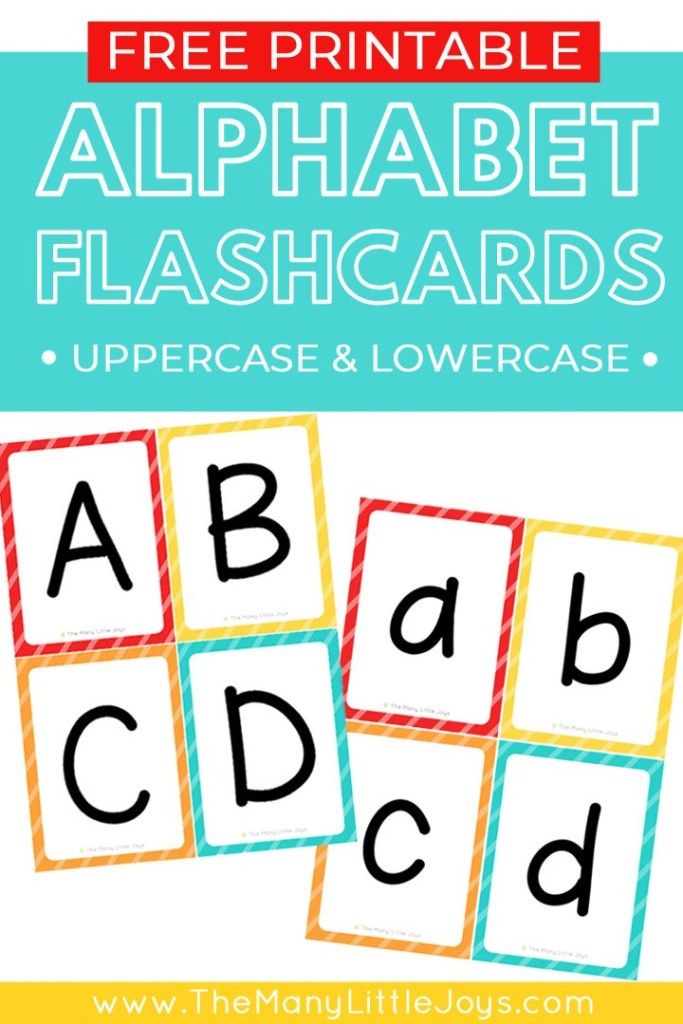 The more sounds in a word, the longer it is. After that, you can proceed to the study of sounds.
The more sounds in a word, the longer it is. After that, you can proceed to the study of sounds.
Start with "a" . You can show the baby pictures that show objects whose names begin with this letter. Draw with him the mouth that makes this sound, note how we open it wide. Let him try to name the words that begin with this letter. Do not overload the child: 1 lesson - 1 letter.
Try to consolidate the acquired knowledge. So you go to the kindergarten, you saw a pharmacy, let the kid try to find the letter that you studied. Bought a children's magazine, see if the title has the letter "a" . You can mold a letter from plasticine or dough, cut it out of paper. You can lay it out of sticks or sand.
It will be much easier for you to captivate your baby if you always have blocks with letters, bright books, cards at hand. You can sing a song about a letter or listen to a cheerful verse.
So, study all the vowels one by one. At the end, you can explain that the sounds that you have already learned are called vowels.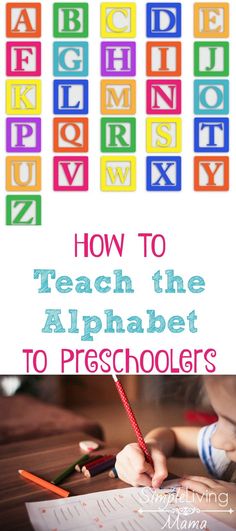 These are sounds that can be sung. Try to sing together "a-a-a" or "u-u-u" .
These are sounds that can be sung. Try to sing together "a-a-a" or "u-u-u" .
Remember that we have 6 vowels ( a , o , y , e , s , and ) and 10 vowels. The letters i , e , i , i consist of 2 sounds. It is better to postpone the study of the latter for later, because there is no sound "i" , i is a letter consisting of 2 sounds. Do not confuse the child so that later educators and teachers do not have to retrain him.
How to learn consonants?
After you have learned the basic vowels ( a , y , and , o ) you can move on to the consonants. You need to start with the simplest consonants ( b , p , m , n , t , g ).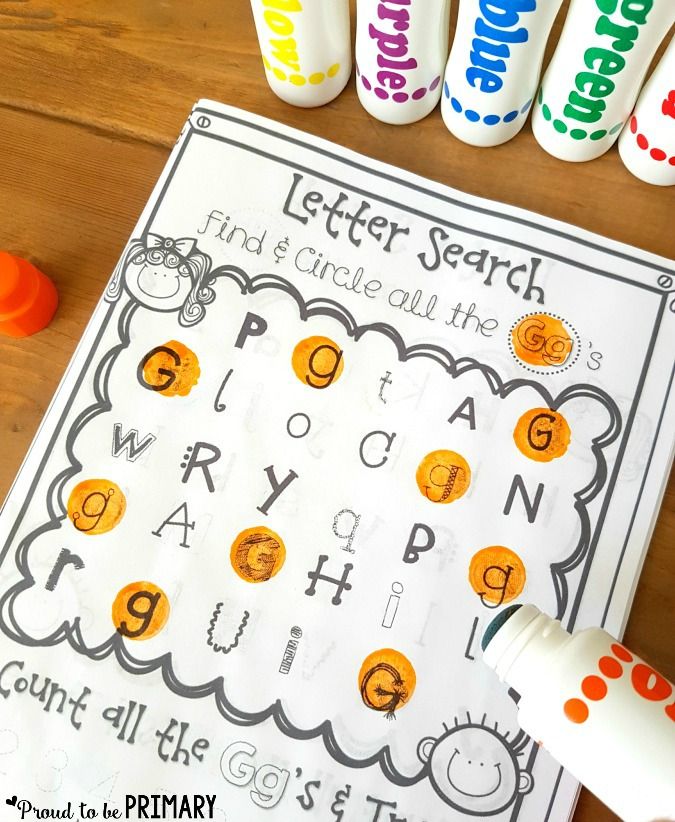 And here again we remember that we are teaching the child sounds, not letters. We know what to say0005 em ", " en ", " be ", but children don't need to know this yet. The child must learn that this is the sound " mm " or the sound " nn ". After the baby learns simple consonants, you can proceed to the study of hissing.
And here again we remember that we are teaching the child sounds, not letters. We know what to say0005 em ", " en ", " be ", but children don't need to know this yet. The child must learn that this is the sound " mm " or the sound " nn ". After the baby learns simple consonants, you can proceed to the study of hissing.
Just like with vowels, knowledge needs to be consolidated. Children may confuse letters. To prevent this from happening, play associations. You can ask the children to think of what this letter looks like. Look for objects on the street that resemble this letter. For example, you walked past the horizontal bar, it is shaped like the letter " p ", or look at the doorway, also resembles " p " in shape. Fold it out of pencils, look for it in store signs.
Alphabet Learning Methods
There are several popular methods for teaching children to read and memorize the letters of the alphabet.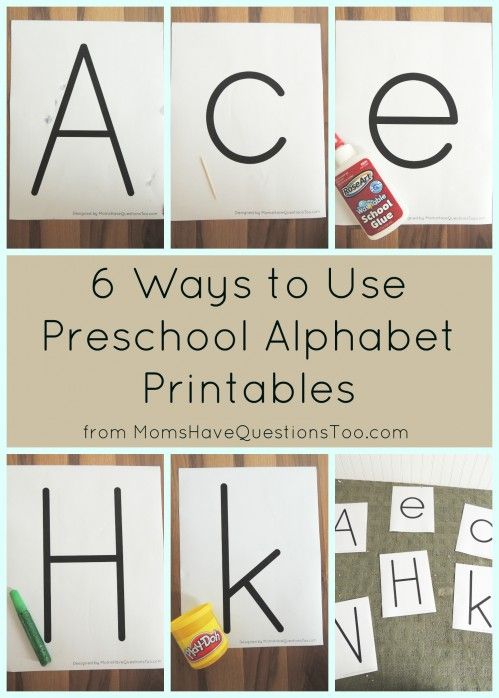 You can use them, especially since specialists worked on them. But, no matter what method you work with, it is important to remember that your classes should not resemble lessons at school.
You can use them, especially since specialists worked on them. But, no matter what method you work with, it is important to remember that your classes should not resemble lessons at school.
Children at this age should play and get the information they need through games. Therefore, after a short training part, immediately proceed to an interesting, gaming one. Creative activities are also very useful, with the help of which you not only study letters, but also develop the child’s fine motor skills, improve his drawing and coloring skills, and strengthen the ability to use scissors.
Games and game exercises
There are a huge number of game exercises that will help you consolidate knowledge. We will give a few examples.
1. Find words with the right sound . You need to prepare cards that show different objects. The child must choose among them those in which there is a studied sound. First, you can simplify the task: ask him to find words that begin with this letter.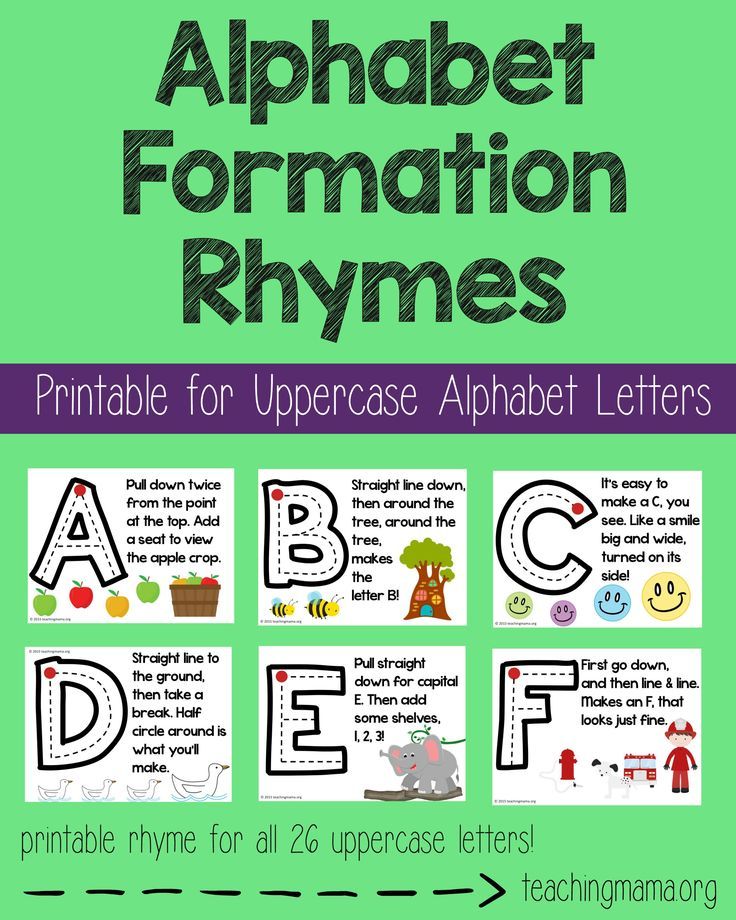
2. Catch the sound . To stretch a little, mother and child walk around the room. Mom calls different words. As soon as the child hears a word with the desired sound, he stops and claps his hands.
3. Think of the word . Ask your child to come up with as many words as possible with a certain sound. You can do this in turn, for example, first the mother calls the word, then the baby.
The task needs to be complicated, that is, the sound can be not only at the beginning of the word, ask him to come up with a word in which this sound will be at the end or in the middle. For example, you are learning the sound "a". First, you select words that begin with this letter - apricot, orange, then those that end in "a" - Moscow, jellyfish or contain the sound "a" in the middle - mosaic, eye.
4. Determine where the sound is hidden. You need to draw a simple word scheme: three squares connected to each other. Each square denotes its own: the beginning of the word, the middle and the end.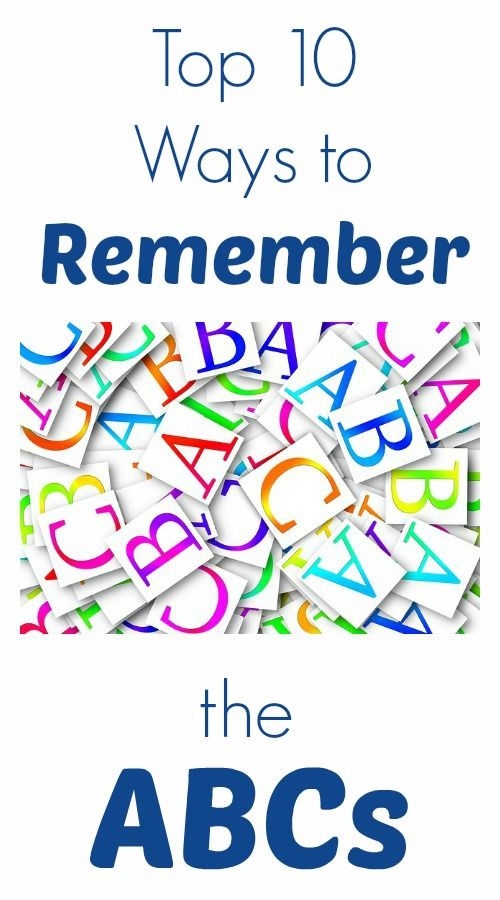 Put this word scheme in front of the child, give him a chip.
Put this word scheme in front of the child, give him a chip.
You name different words, and he must show on the diagram where the sound that you pass is located. For example, if you called the word "watermelon" (you can show a picture), the child must put the chip in 1 cell, and if the word "fox" - then in the 3rd cell.
5. Ball game . An adult throws a ball to the child and calls different words. If they have a letter being studied, he catches the ball, if not, then he does not catch it. To begin with, you can use words in which this letter is at the beginning, then complicate the task, that is, it can be in the middle or end.
Author's methods of learning the alphabet
There are several recognized methods of teaching reading, each of which can be devoted to a separate article.
Zaitsev's cubes
The basis of Zaitsev's technique is a game, that is, children just play with cubes (there are 52 cubes of different sizes in the set) and at the same time learn to read without making any effort.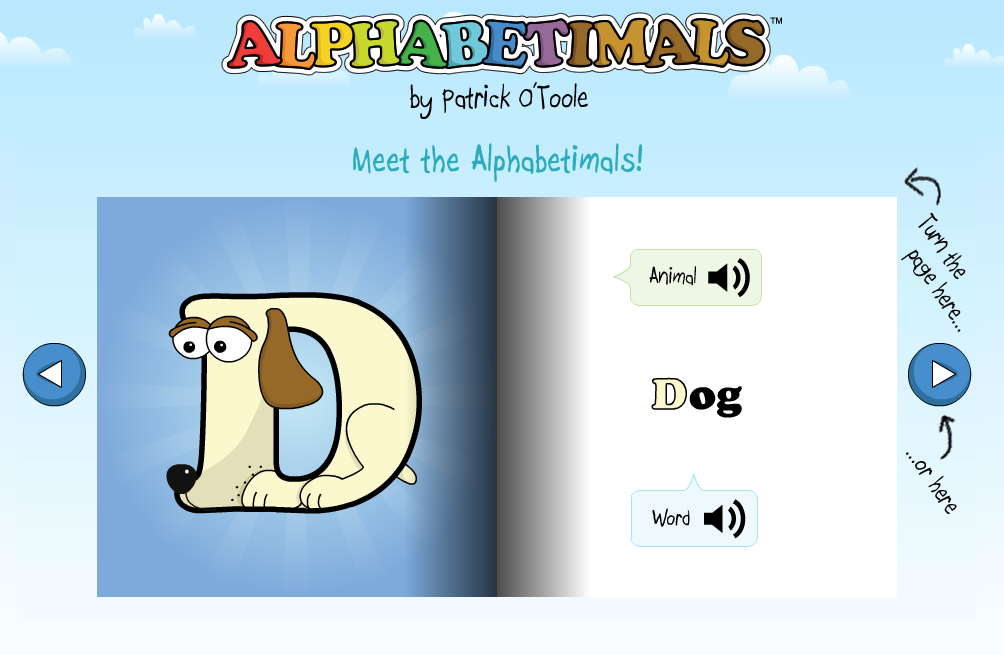 These games can be started from 6-12 months old, but up to 2 years old they are used like regular blocks, and children after 2 years old can start making words.
These games can be started from 6-12 months old, but up to 2 years old they are used like regular blocks, and children after 2 years old can start making words.
Zaitsev's main unit is a warehouse. It can consist of a consonant and a vowel, or a single letter. The basis of this method is the warehouse principle of reading. In addition to cubes, a large warehouse table is also used.
This technique has many advantages, the main of which is that any child can be taught to read. But there are also disadvantages, for example, over time, children will have to be retrained, because they remember that letters are indicated by one color, and the teacher enters his own colors, for example, red is a vowel. In addition, the child is used to the fact that words are divided into warehouses, and not into syllables. Yes, the benefits are very expensive.
Doman's cards
The neurosurgeon Glen Doman developed his technique for children with CNS disorders, but then it was also used to teach healthy kids.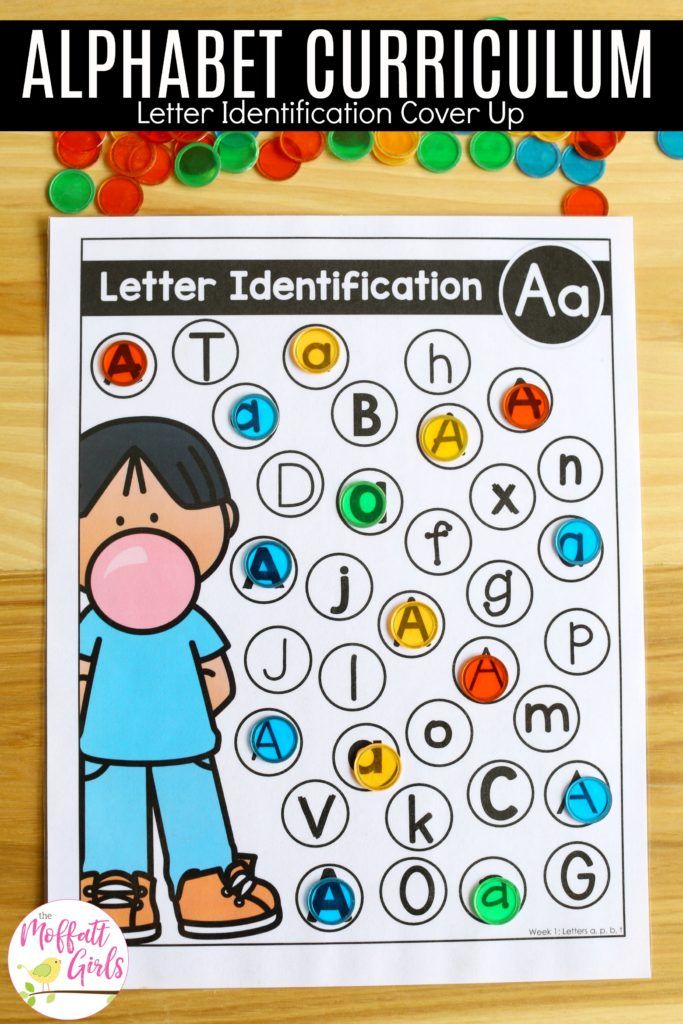 He recommends teaching children to read not by letter, but by words, since letters mean nothing to him, and words have real designations.
He recommends teaching children to read not by letter, but by words, since letters mean nothing to him, and words have real designations.
For this, whole words are written on the cards in large print (at least 7-10 cm), for example, “mother” or “dad”, which must be quickly shown to the child, voicing each word. With the help of this method, even a small child can be taught to read. Training is necessarily carried out at an early age; after 5 years, the Glenn Doman method no longer works.
Olga Soboleva's Methodology
The principle of this training is based on the "two-hemispheric" work of the brain. The teacher tries to use the dominant type of memory, that is, the material is divided into 3 groups: for kinesthetics, visuals and auditory.
Many of its techniques are also used by ordinary teachers when teaching traditional methods to make it more interesting for children to study. Well suited for creative children and parents, it is not recommended for families where logic and structure come first.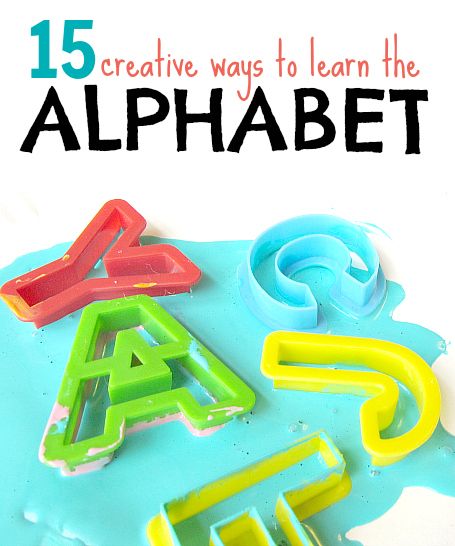
Polyakov's method
Its author came up with 7 steps of learning to read, 70 lessons in total. Each lesson is detailed. They are held in the form of a game, take no more than 10 minutes. Stages 1 and 2 are the study of letters, warehouses, reading in warehouses.
Sergei Nikolaevich Polyakov himself, unfortunately, is no longer alive, but his work was continued by his son, as well as teachers who practice this method. If you wish, you can purchase books that describe in detail how to conduct classes, as well as video files with examples of classes.
Creative exercises
To reinforce the acquired knowledge, it is useful to conduct creative activities. For example, you can make a beautiful alphabet together. We studied the letter - cut it out of cardboard. It is better to choose a dense material. If it is difficult for the baby, you can help him, and the child will decorate - attach beads, groats, sequins, beautiful fabric, etc.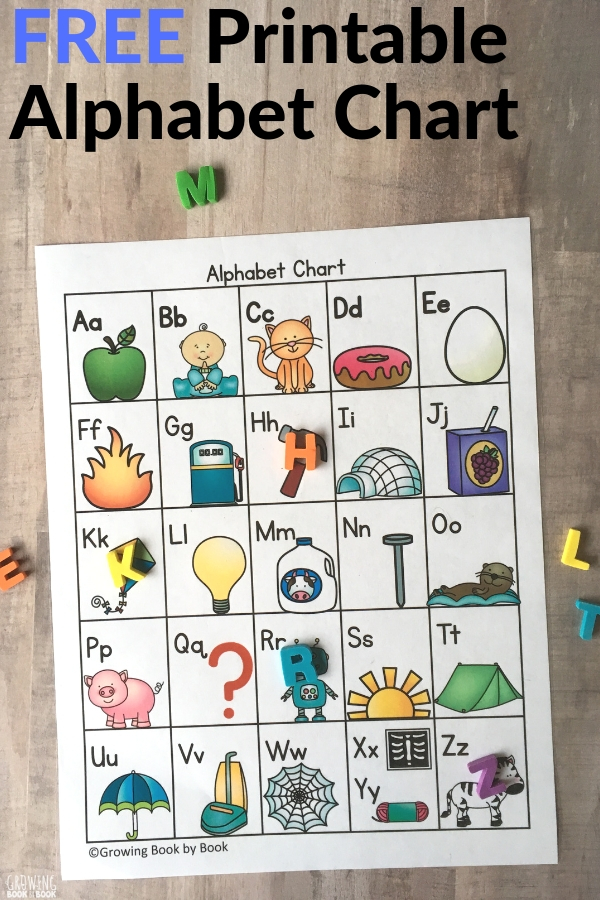 to it.
to it.
When you have collected the entire alphabet, you can decorate the children's room with it by connecting the letters into garlands, or hang it on the Christmas tree instead of toys. You can cut out paper blanks for letters, and the child must fold the whole letter from these parts.
Preschoolers love to draw and color. You can buy coloring books with letters, he will color them and remember what kind of letter it is. Or ask him to draw with felt-tip pens on paper, with chalk on a blackboard what you have already studied. But at this age, children should not be taught writing, this should be done by teachers in elementary school. The only thing you can teach your baby is to write in block letters.
If you are baking pies, ask your child to make familiar letters out of the dough. You can sculpt from plasticine or clay, decorate figures with cereals or peas. These activities will not only distract the baby from the TV, but also help develop fine motor skills.